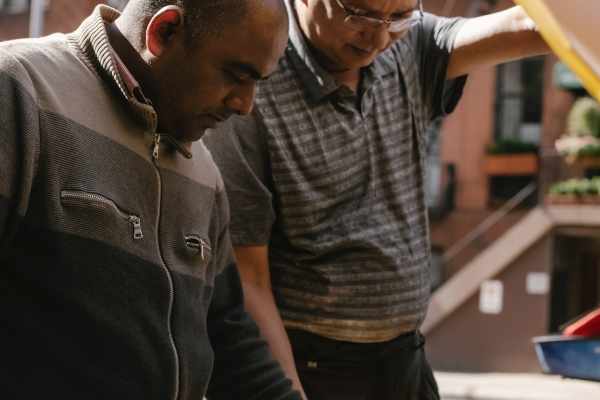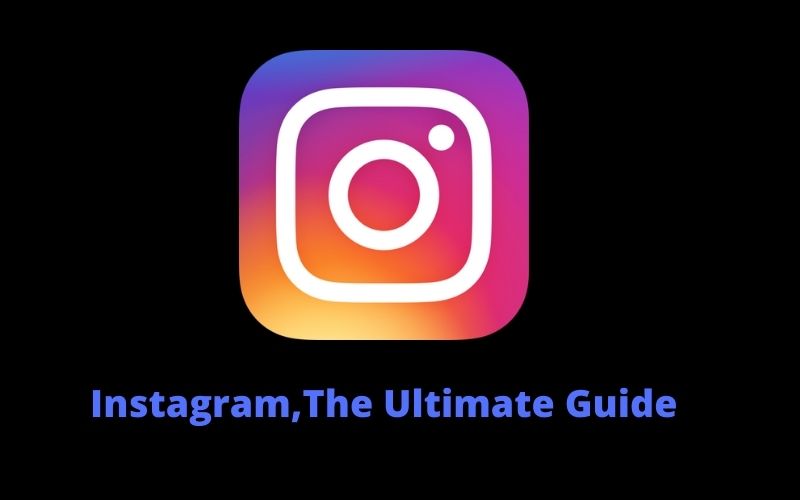The streaming is the technology of the future for the use of professional video streaming content such as movies, TV series and sporting events. In the United States, for example, the MPAA ( Motion Picture Association of America ) stated ( PDF ) that in 2018 the number of subscriptions to services such as Netflix and the like exceeded that of houses connected to “cable”, the US premium TV – and not a little: we are talking about 613.3 million users against 556 million. Globally, according to Ampere Analysis research, the turnover of the streaming market will reach 46 billion in 2019: therefore it will exceed the turnover of cinemas, which should be around 40 billion.
The exact figures may vary depending on the bell you listen to – physiological, when it comes to projections and market research – but everyone agrees: streaming is growing very quickly, both as users and as turnover, to the detriment of all the others distribution channels – which in most cases are declining.
Table of Contents
Video Streaming
THE ADVANTAGES OF STREAMING
The advantages of streaming are quite obvious: thanks to on-demand technology, you can watch what you want, when you want and where you want. All you need is a reasonably fast internet connection, a compatible device and an active subscription.
Smartphones, TVs, consoles, tablets and computers are all part of the same ecosystem: I can follow my favourite series from the TV comfortably sitting on the sofa, at home, or from the PC on the train while I go to work, or from the smartphone when I am under the ‘Beach umbrella.
I don’t have to wait a week for the next episode, and I don’t have to be in front of the screen at a specific time. There is more user-side versatility, also expanded by the fact that internet access is now predominantly wireless: for streaming, a TV only needs to be connected to electricity and to the Wi-Fi network. Goodbye antenna cables, decoders and dishes.
THE NETWORK AND INFRASTRUCTURES BEGIN TO BE MATURE, AT LEAST IN PART
At this stage, we can say that streaming has now reached a level of maturity that is the only source of video content for a fair number of families. The spread of broadband (latest data HERE) means that more and more houses have fast enough connections to support the distribution of high-resolution video streaming without delays and buffering problems.
This is especially true for those who are only interested in those types of “pre-recorded” content, such as movies, TV series, cartoons and documentaries; for those who follow real-time broadcasts, such as sporting events, concerts and political debates, the situation is a little bit more immature, but it is improving rapidly.
THE IMPORTANCE OF SPORTING EVENTS
Real-time content, especially sporting events, represent a large part of the TV market: we Italians, with our historical passion for football and Formula 1, are one of the most obvious demonstrations. But it’s a global phenomenon: the 2018 football World Cup was seen by about 3.6 billion people, and similar figures have collected the Rio 2016 and London 2012 Olympics.
So it is reasonable to ask: why the offer of pre-registered, like those found on Netflix for example, is it so wide, while platforms specialized in sport, such as DAZN, are less widespread? The answer is simple: because building a platform for live content is much more difficult. To understand why you need to take a step back.
HOW STREAMING WORKS
In principle, the concept of streaming is easy to understand. The client system “reads” it from there instead of from a local physical storage medium. Such as a USB stick or an internal hard drive. In practice, however, to make the user experience as satisfactory as possible. You need a very complex, layered and sophisticated hardware/software infrastructure. By schematizing and simplifying, we can say that the main steps are as follows:
- The platform uploads the video streaming files of the contents, original or acquired by other publishers, to a server.
- [Transcoding: phase 1] The client devices, on which the videos will be played, are manifold, with profoundly different characteristics: it is, therefore, necessary to create multiple versions of the files making sure to cover all the combinations of codecs and resolutions supported/required by compatible clients.
- [Transcoding: phase 2] From each file produced in this way, even more versions with different bitrates are created, so that the content can be provided at a lower quality if the network conditions are poor.
- [DRM] All content is encrypted with digital copyright protection systems, so as to prevent it from being illegally copied.
- [Redundancy and distribution] To ensure optimal quality of service and protection from network failures and problems, content is copied to multiple servers located in various parts of the world; the precise number, of course, varies according to the users of the area, but here too it is very complex calculations, which take into account the number of subscribers, growth forecasts, possible peak phases (perhaps in conjunction with the launch of a new highly anticipated show).
And
Then there are all the “accessory” services, which are essential to guarantee a user experience that lives up to the expectations of today’s users: checking the validity of the subscription, the interface of the application or the web portal, the tracking of the viewing history from which the suggestions, subtitles, the ability to change audio streams and much more are processed. The ability to adapt the quality of streaming in real-time according to the detected network quality is fundamental for the latest generation platforms.
ADDITIONAL COMPLICATIONS OF LIVE EVENTS
The advantage of processing pre-recorded video content is that there is no urgency. To take an absurd example, a film could take up to a month to go from point 1 to point five we were talking about above: it just needs to arrive in time for the scheduled availability date.
For live content, however, not only are there more passages, that is the material shooting of the event with the cameras and its transformation into a single digital file (to which, just to complicate things little, audio streams in multiple languages must be associated, for example in the case of a commentary served in several states), but all processing must take place substantially in real-time. The delay between when an event happens in reality and when the user sees it on their screen must be a few seconds, to be acceptable.
And
The difference with respect to television broadcasts. That the delay may not be exactly the same for all users, in streaming. The server sends each user a specific data packet. In streaming, the path of each packet from the server to the end device, therefore, depends on multiple factors. Many of which are external to the platform that sends the content, including:
- The quality of the internet infrastructure of the place/country where you live;
- The goodness of other key parameters such as ping;
- The quality and configuration of the local network. The repercussions that the increasing number of connected devices have on home routers;
- The technical specifications of the client device through which the user sees the content.
In practice, it may therefore happen to hear the neighbour cheer a few seconds before for a goal. We will talk about all the tricks. A particularly important topic in this period. On the eve of the start of the football championship and of all the major sporting events.
TWO ACCOUNTS
In live events, the servers must also be ready to handle extreme peaks of connections simultaneously. It is safe to assume that the vast majority of people will want to see a game or a race exactly when it happens. Not after two hours, a day or a week. In the management of these peaks. The country’s network infrastructures and providers play a top-level role.
To give a rough idea of how stressed DAZN’s infrastructure and similar services are at crucial times, let’s take an example. The third season of Stranger Things totalled 40 million views in four days, a record for Netflix. Let’s say the hype effect brought half of these views in the first day alone. Twenty million out of about 150 million accounts worldwide. According to statistics from the consultancy Ovum.
USA Netflix users are 1.5 million at the end of 2018. 1%. They are assuming a homogeneous distribution in all markets. However, coated in 24 hours; Parma – Juventus, according to Nielsen. However crude the calculation, it is quite evident that the figures at stake are on a whole other order of magnitude.
So it is very important to understand the different types of streaming. In order to also understand the effort. That a company must make and the infrastructure necessary to offer a live service in real-time to a huge number of end-users. Small delays of a few seconds, especially indirect.
List of Best Grinding Gear Games
How to watch streaming movies and TV shows
Anyone who has experienced the VHS era knows how cumbersome. It was in the 90s to access the most varied video streaming content. Whether it was cartoons, TV series, short films or auteur films. The purchase and rental of this material required dramatically long times. The subsequent move to smaller-sized media. Such as CDs and DVDs, has greatly fluidized the market, paving the way for the digitalization of content. Watching streaming movies today is far from complex. Just access a dedicated platform and select the content chosen from the proposed title park. But how do these sites work? How do they differ from each other? Clarity is a must.
How Mediaset and Raiplay streaming works
Typically, like PayTV platforms, any platform that allows streaming content also requires the creation of an account. Among the big names in entertainment with no monthly fee, Raiplay deserves a special mention. Offering users logged in a modest list of proposals. In addition to award-winning TV series.
You can scroll through a large catalogue of films, ranging from unforgettable classics to the most captivating horror films. Then follows Mediaset, which with Italian fiction. Live streaming and special content for cinephiles, satisfies a wide and varied audience as can be understood. Navigating on these portals is advantageous.
How to play Minesweeper
How streaming works with CHILI Cinema and YouTube
Among the various portals that process the rental. Streaming and dissemination of Video streaming content. CHILI Cinema and Youtube. They are the ones who partially reworked the concept of on-demand. These platforms do not, in fact, require the subscription of any subscription. But require the payment of the individual streamed contents. The difference between the two is, however, quite clear.
While the former concentrates its efforts on fiction, films. First visions and the sale of gadgets. The latter has less decisive nuances, giving a huge space to amateur films. The purchase of a film during the promotional period can cost 4 euros, the rental, instead, only 99 cents. In the latter case, however, viewing the content will be guaranteed for 28 days.





